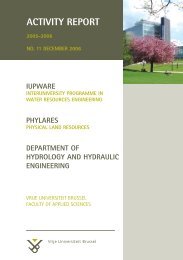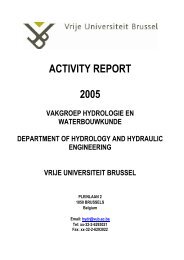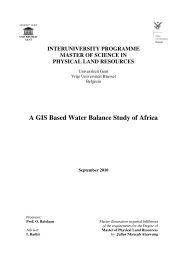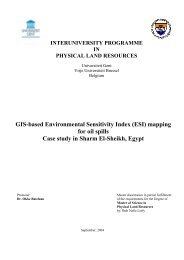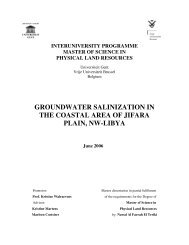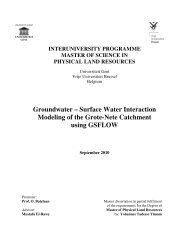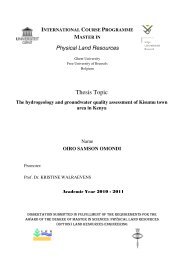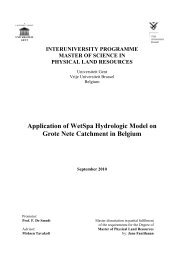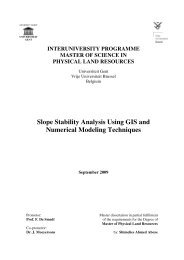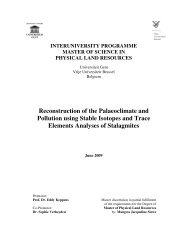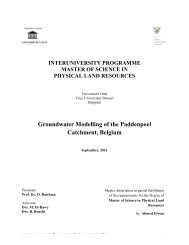Surface Water Interaction Modelling Using Visual MODFLOW and GIS
Surface Water Interaction Modelling Using Visual MODFLOW and GIS
Surface Water Interaction Modelling Using Visual MODFLOW and GIS
- No tags were found...
Create successful ePaper yourself
Turn your PDF publications into a flip-book with our unique Google optimized e-Paper software.
PHYLARESIntroduction / ch.1__________________________________________________________________________________________1Chapter 1Introduction1.1 General Overview<strong>Water</strong> covers two-thirds of the Earth’s surface <strong>and</strong> surrounds the planet in vapor form. Chemical<strong>and</strong> density stratification during <strong>and</strong> immediately following accretionary heating of the Earth’sprimordial planetary body resulted in its present layered configuration. Internal heat <strong>and</strong>chemical reactions caused water, which was originally bound as oxygen <strong>and</strong> hydroxide inminerals, to diffuse from the Earth’s interior towards its surface. This degassing (still an ongoingprocess) of both water <strong>and</strong> other volatile species resulted in the accumulation <strong>and</strong> eventualcondensation of the fluid envelope of the Earth. Of course, water was also delivered to our planetby infalling comets <strong>and</strong> other H 2 O bearing planetesimals.The hydrologic cycle describes the complex system whereby water circulates among its variousreservoirs at <strong>and</strong> near the surface of the Earth. These reservoirs include the oceans, theatmosphere, underground water (including both soil water <strong>and</strong> groundwater), surface water(lakes, rivers <strong>and</strong> wetl<strong>and</strong>s), glaciers <strong>and</strong> the polar ice caps. The Hydrologic cycle is directlycoupled to the Earth’s energy cycle, because solar radiation combines with gravity to drive theglobal circulation of water. This circulation, in turn, plays an important role in the heat balanceof the Earth’s surface. The hydrologic cycle is also closely linked to the geosphere <strong>and</strong> its rockcycle. <strong>Water</strong> erodes geologic materials, <strong>and</strong> the breakdown of these materials releases manychemical constituents that in turn define the chemical nature of the water. <strong>Water</strong> can also buildgeologic formations, through both chemical <strong>and</strong> mechanical depositional processes. <strong>Water</strong> isessential to all life forms in the planetary biosphere. (Mauricie, et.al, 2001).Only a small portion (3 %) of the water covering the earth’s surface is fresh. Of the fresh water77.5% is locked in ice fields <strong>and</strong> glaciers. <strong>Surface</strong> water <strong>and</strong> underground water are the utilizable______________________________________________________________________________________Groundwater – <strong>Surface</strong> water interaction modeling using visual <strong>MODFLOW</strong> <strong>and</strong> <strong>GIS</strong>




